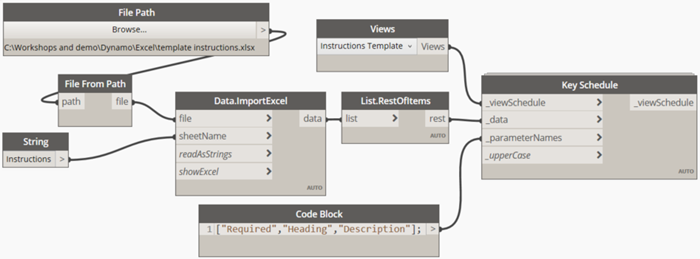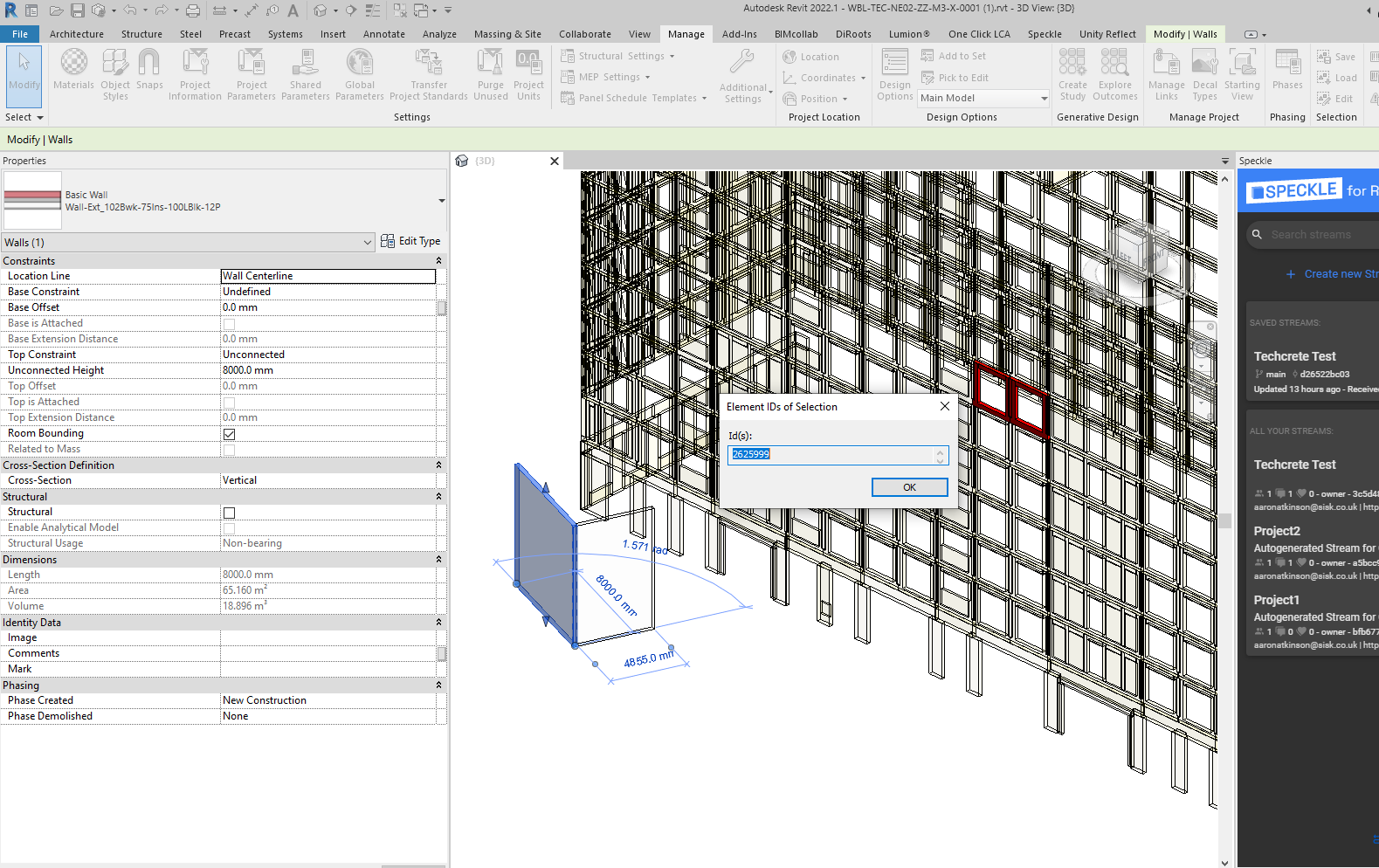Import Excel into Revit: Enhancing Your Operations
Wiki Article
Excel-to-Revit: A Game-Changing Workflow for Architectural Style - Introducing the Tricks
Introducing excel-to-revit, the game-changing process that will certainly reinvent your layout procedure. With excel-to-revit assimilation, you can streamline your architectural design, unlock performance, and maximize collaboration within your team. Get all set to take your building layout to the following degree with excel-to-revit!The Power of Excel-to-Revit Combination

Imagine the convenience of being able to edit and upgrade project information in Excel, and immediately see those changes reflected in your Revit model. No much more manual data entrance or tiresome updates. With Excel-to-Revit assimilation, you can save time and lower errors by leveraging the power of Excel's solutions and features to automatically generate precise data in Revit.
Not only does this assimilation improve efficiency, however it also improves cooperation amongst group members. You can easily share Excel data with colleagues, who can after that import the information into their Revit versions. This advertises a smooth exchange of details and makes sure that everyone is collaborating with the most current data.

Simplifying Building Style With Excel-To-Revit
Improving architectural design is made much easier with using Excel-to-Revit (revit add ins). With this powerful assimilation, you can optimize your operations and conserve useful time throughout the style procedure. By leveraging the capacities of Excel and Revit, you can seamlessly transfer information in between the two systems, getting rid of the need for hand-operated information entrance and minimizing the threat of errorsExcel-to-Revit allows you to import and export information effortlessly, enabling you to conveniently upgrade and customize your architectural designs. You can create schedules, calculate quantities, and generate records in Excel, and after that move that information directly into your Revit model. This integration makes certain that your style information is always current and synchronized, eliminating the need for hand-operated updates and decreasing the chances of incongruities.
By utilizing Excel-to-Revit, you can also make the most of the effective computational capacities of Excel. You can do complex calculations, analyze information, and automate recurring jobs, all within Excel. After that, with simply a few clicks, you can import the outcomes back right into Revit, allowing you to make informed style decisions and maximize your building layouts.
Opening Effectiveness: Checking Out the Excel-to-Revit Workflow
Optimize your performance by effortlessly incorporating Excel and Revit for a more efficient process. With the Excel-to-Revit process, you can unlock an entire new level of effectiveness in your building design process. By utilizing the power of Excel's information administration capacities and integrating it with the adaptability and precision of Revit, you can streamline your style procedure and save valuable time.Among the essential benefits of this assimilation is the ability to import and export data between Excel and Revit. This means that you can easily move job info, such as area timetables or product amounts, from one software program to the various other, eliminating the requirement for hands-on information entry and minimizing the possibilities of mistakes. You can additionally produce custom formulas and calculations in Excel to automate repeated tasks and carry out intricate calculations, which can then be seamlessly integrated into your Revit versions.
Additionally, the Excel-to-Revit operations permits far better coordination and partnership in between team members. With Excel serving as a main information center, multiple group participants can deal with various facets of the project at the same time, sharing and updating info in real-time. This not just improves communication yet additionally makes sure that everyone is collaborating with one of the most current information, removing the threat of disparities.
Taking Full Advantage Of Cooperation: Excel-to-Revit for Architectural Teams
By perfectly integrating Excel and Revit, building groups can substantially improve collaboration and accomplish a lot more reliable design outcomes. When using this powerful process, you can quickly move information in between Excel spread sheets and Revit versions, simplifying the design procedure and enhancing communication among staff member. With Excel-to-Revit integration, you can effortlessly import project data, such as room schedules, material quantities, and project parameters, directly into Revit, eliminating the need for manual information access and lowering the opportunities of mistakes. This smooth link enables real-time updates, making sure that everybody is working with the most up-to-date information and staying clear of disparities in between different files.In addition, by leveraging Excel's powerful computation capacities, navigate to this website you can carry out intricate calculations and analysis on your layout data, driving and giving useful insights informed decision-making. This assimilation likewise allows you to export data from Revit to Excel, allowing you to produce comprehensive records, charts, and graphs for discussions and analysis. look at these guys This joint process promotes reliable communication and control among staff member, as Excel functions as a central hub for information management and sharing.
Total, by embracing the Excel-to-Revit process, architectural groups can attain higher degrees of collaboration, performance, and precision in their design process. import excel into revit. This combination encourages teams to interact seamlessly, making sure that everyone gets on the same page and adding to the success of the task
Unveiling the Tricks of Excel-to-Revit Assimilation

One of the secrets of Excel-to-Revit combination is the capability to leverage the power of solutions and estimations in Excel to drive criteria and generate complex geometries in Revit. You can link Excel spread look at here sheets to Revit family members, permitting you to input information straight into the spreadsheet and have it automatically update in the Revit version. This streamlines the design procedure and ensures accuracy and uniformity throughout the task.
Another key is the capability to create customized timetables and records in Excel, using information drawn out from Revit. This enables you to evaluate and picture task info in a manner that is not feasible within Revit alone. You can conveniently create amount take-offs, expense estimates, and project timelines, offering valuable insights for decision-making and task monitoring.
In enhancement, Excel-to-Revit integration enables efficient cooperation amongst staff member. Multiple customers can work with the exact same Excel spreadsheet at the same time, making it simpler to coordinate and track adjustments. You can additionally use Excel's commenting attribute to supply comments or communicate layout modifications.
Conclusion
By combining the power of Excel and Revit, architects can now function a lot more efficiently, conserve time, and create better designs. Start integrating excel-to-revit integration into your building layout process today and transform the way you function.With simply a couple of clicks, you can import the results back into Revit, permitting you to make enlightened style decisions and maximize your building designs.
By making use of the power of Excel's data administration capacities and combining it with the versatility and accuracy of Revit, you can improve your layout procedure and save useful time.
By seamlessly integrating Excel and Revit, building groups can greatly enhance partnership and attain much more reliable style outcomes. When using this effective operations, you can easily move data in between Excel spreadsheets and Revit versions, streamlining the style process and enhancing communication amongst team participants.Moreover, by leveraging Excel's powerful estimation capabilities, you can carry out complicated computations and analysis on your layout information, offering useful understandings and driving notified decision-making.
Report this wiki page